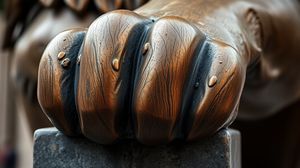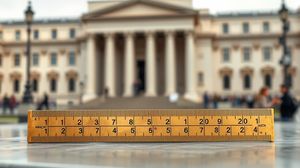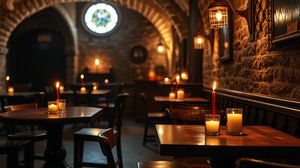
Admiralty Arch is an iconic landmark in London that stands as a magnificent gateway between The Mall and Trafalgar Square. Originally commissioned by King Edward VII, the structure was completed in 1912 in memory of Queen Victoria, serving both as a ceremonial entrance to The Mall and as government offices.
The design of Admiralty Arch includes five arches, with the central one traditionally reserved for royal processions. The neoclassical architecture, by Sir Aston Webb, is adorned with intricate sculptures and holds significant historical importance.
An intriguing detail about Admiralty Arch is the presence of a small nose sculpture on one of its walls. Installed by artist Rick Buckley in the late 1990s as a form of protest against increased surveillance, it has become a quirky point of interest often overlooked by passersby.
The Latin inscription on the structure dedicates the arch to Queen Victoria and is a classic example of royal messaging in architectural forms. It reads "ANNO DECIMO EDWARDI SEPTIMI REGIS VICTORIÆ REGINÆ CIVES GRATISSIMI MDCCCCX," which translates to "In the tenth year of King Edward VII, to Queen Victoria from a grateful nation, 1910."
In recent years, Admiralty Arch has undergone development to transform part of it into a luxury hotel, ensuring that this historic structure remains a blend of past elegance and modern use. The transformation has been carefully managed to preserve its historical integrity while adapting it for contemporary purposes.
Admiralty Arch is imbued with both historical and cultural significance, having witnessed numerous national events and celebrations, including royal weddings and jubilees. Its location at the heart of London makes it a must-visit for those exploring the city, offering a glimpse into its royal and architectural heritage.

Making the Most of Your Visit:
When you visit Admiralty Arch, take the time to look for the "nose" on the inside wall of the north side. It's an unusual art installation by Rick Buckley, added in the 1990s as a protest, and a fun little detail that many people miss. Spotting it makes for a great conversation starter!
Plan to pass through the central arch if the road isn't blocked off, especially during ceremonial events. This arch is traditionally reserved for royal processions, and walking through it connects you to the history of the place, giving you a sense of ceremony as you continue towards Buckingham Palace.
Make sure to look up and appreciate the detailed sculptures and carvings on Admiralty Arch. The architectural details are genuinely impressive, with Latin inscriptions and intricate stonework that tell tales of the past. It's easy to stand beneath the arches and forget to look up!
Try to visit at night as well as during the day. The lighting of Admiralty Arch at night adds a completely different feel to the structure, making it an excellent spot for night-time photography when the streets are less crowded.
Peek through the openings into The Mall. The view is iconic, stretching all the way to Buckingham Palace. The alignment is perfect for photos, especially during national celebrations when the flags line the Mall, offering a quintessentially British backdrop.

Visiting Times & Costs:
Admiralty Arch itself, as an architectural structure, is generally accessible to the public from the exterior. Visitors are welcome to walk through the arches and explore the surrounding areas, as it serves as a public thoroughfare between The Mall and Trafalgar Square.
Currently, there is no admission fee required to walk through or view Admiralty Arch from the outside. However, due to the ongoing conversion of part of the building into a luxury hotel and private residences, there are no internal tours or public access to the inside spaces unless specified by special arrangements or events.
The current use of Admiralty Arch primarily as a hotel may limit public access to certain areas once open, so visitors are encouraged to enjoy the external architectural elements and the ceremonial significance.
As with any historic site, accessibility may vary, and those with mobility challenges should note that the surrounding areas may include uneven surfaces commonly found in older parts of the city. It's advisable for visitors to confirm the accessibility of surrounding areas beforehand, especially if visiting during busy seasons or events.

Address & Map:

Nearby:























